COOPERATION MODEL
ARTIFICIAL INTELLIGENCE
PRODUCT ENGINEERING
DevOps & Cloud
LOW-CODE/NO-CODE DEVELOPMENT
INDUSTRY
FRONTEND DEVELOPMENT
CLOUD DEVELOPMENT
MOBILE APP DEVELOPMENT
LOW CODE/ NO CODE DEVELOPMENT
EMERGING TECHNOLOGIES







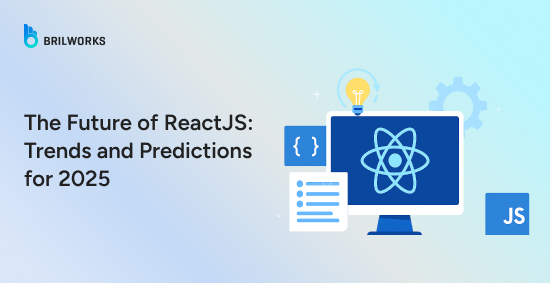
React is currently used by over 82 million websites, with a 42.78% share among the top 10,000 sites in 2025. According to the 2024 Stack Overflow survey, it remains one of the most widely adopted frontend frameworks.
But the ecosystem is evolving. Tools like Svelte and SolidJS are gaining ground, praised for simpler syntax and strong performance benchmarks. Vue continues to strengthen its position, especially in enterprise settings.
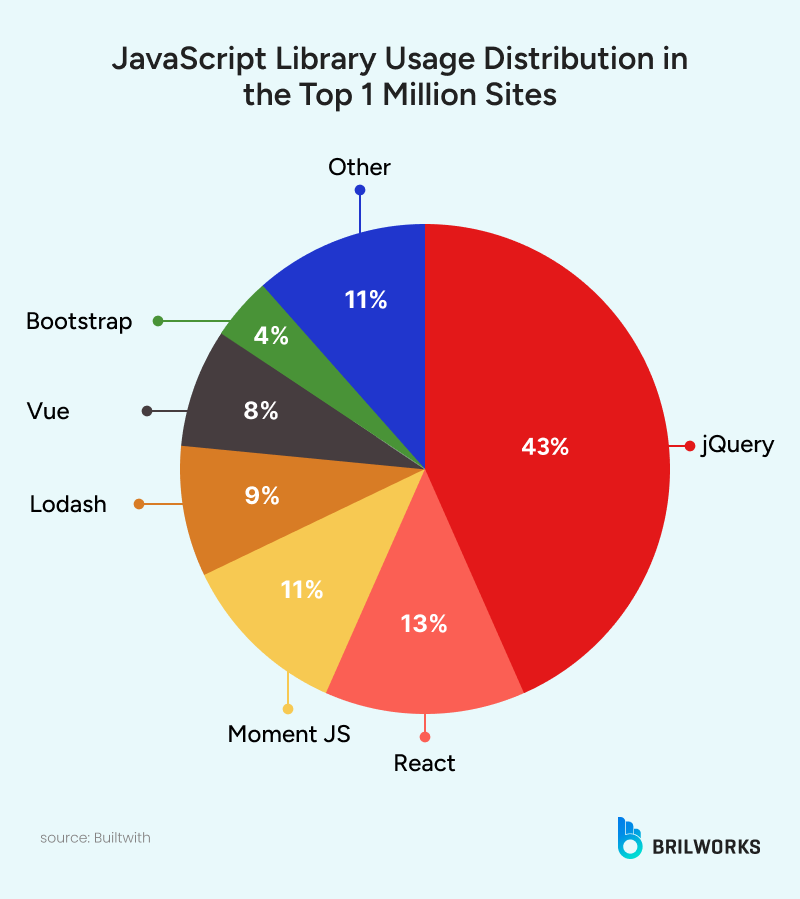
In this context, web development teams are reconsidering their approach. AI-assisted workflows, performance-first strategies, and new runtimes are shaping the way companies build. While React remains a leading force, its dominance is no longer automatic.
Mark Erikson, maintainer of Redux, recently shared his perspective in The State of React and the Community in 2025. He described the ecosystem as “complicated,” noting that while React is not failing, its once-default simplicity is now weighed down by new layers of complexity.
So what does this mean for React in 2025? Below, we’ll break down the trends, new rollouts, and adoption shifts shaping its future.
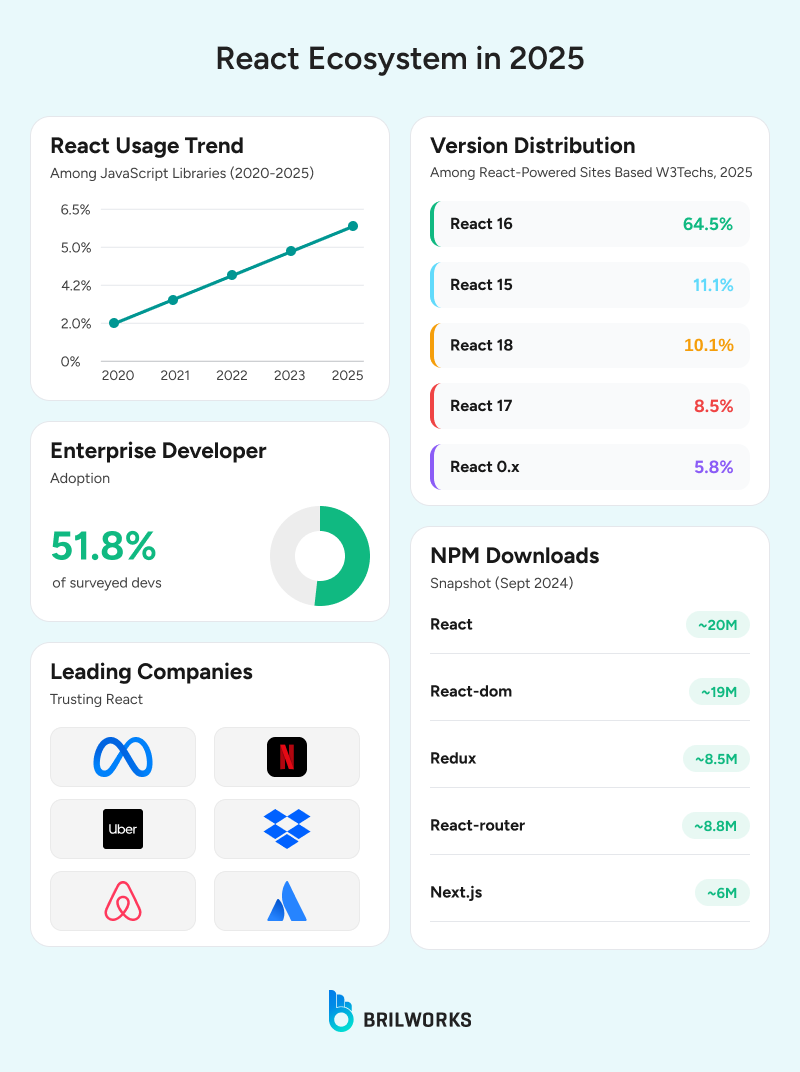
React 19 marks a pivotal moment in the library’s evolution, driven by the arrival of React Server Components (RSC). With RSC, developers can render components at build time, reducing load on the client and cutting down hydration overhead.
In Next.js, RSC is enabled by default from version 14 onwards. That tight collaboration has made Next.js the most future-ready React framework today.
Key React 19 features in 2025:
React Server Components (stable, widely adopted in new builds).
Streaming server rendering for faster delivery.
Improved hydration, avoiding unnecessary work for non-interactive components.
Suspense enhancements, allowing smoother loading states.
A React Compiler pipeline, optimizing performance under the hood.
Concurrency baked into rendering by default.
These features are being adopted most rapidly in new projects and among Next.js development companies.
AI solutions are reshaping React development. Tools like GitHub Copilot and Windsurf are now standard parts of modern IDEs, offering code suggestions and automated checks.

The GitLab developer survey update shows that 78% of organizations are already using AI in development or plan to, up from 64% in 2023. By handling repetitive tasks, AI helps developers focus on higher-value work while improving code quality. For companies, these AI solutions are becoming integral to addressing challenges in front-end development.
Micro-frontends combined with design systems are becoming the norm in 2025. Module federation and tools like Storybook or Bit.dev make it easier for large teams to work independently while still contributing to shared UI libraries.
That said, discussions on platforms like this Reddit thread show that the transition away from monorepos isn’t always smooth. Mature organizations, especially those with multi-team setups, see the most benefit in adopting this modular approach.
Performance remains a top priority. Teams now view Lighthouse metrics as essential to SEO, conversions, and user retention.
React 19 introduces features like streaming SSR, RSC, and suspense enhancements, which allow developers to ship faster, lighter applications. Meanwhile, edge-first deployment from providers like Vercel and Cloudflare is making performance-driven architectures the default.
React Native is also seeing renewed momentum. Updates like Fabric, TurboModules, and the new architecture have addressed long-standing developer pain points. Frameworks like Expo Router and universal design systems are making cross-platform development more efficient.
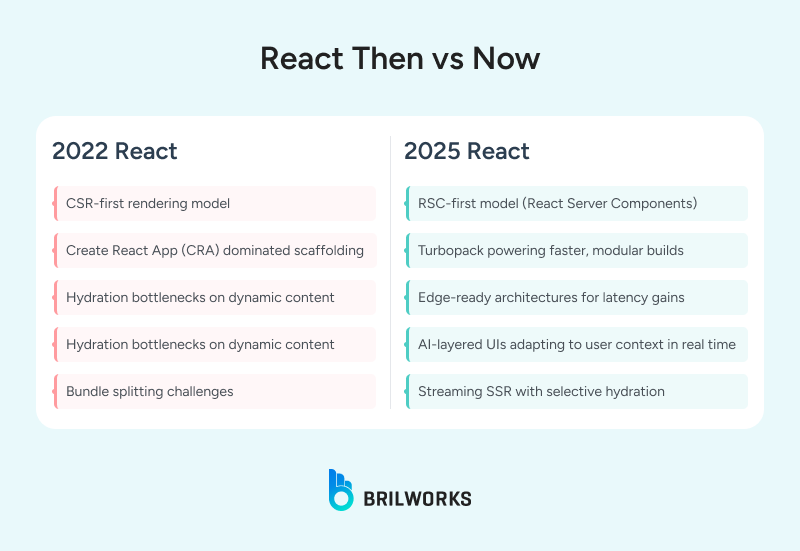
Enterprises like Microsoft and Shopify are doubling down, while startups in fintech and healthcare use React Native for cost-effective cross-platform apps. React Native is evolving from a compromise solution to a robust option for integrated, full-stack JavaScript workflows.
Build performance is undergoing a quiet revolution. Tests on production apps show Vite loading pages in under a second, compared to 13+ seconds on legacy setups. Turbopack, now default in Next.js, reduces cold start time significantly.
Evan You highlighted Vite’s more predictable Hot-Module Replacement in large projects, while others like Kyle Gill benchmarked faster load times in real-world apps. Together, these shifts show that React’s ecosystem is moving away from Create React App toward faster, modern runtimes.
Since React 18, concurrency has become foundational. Features like startTransition and useDeferredValue aren’t optional optimizations anymore.
This shift means teams not yet adopting concurrent rendering may face bottlenecks, particularly in mobile-first markets where performance is critical.
Server-first rendering is no longer a trend, it’s an infrastructure shift. Frameworks like Next.js 14 now default to streaming SSR combined with RSC. Remix is adopting selective SSR, while the React team is pushing server-first rendering to reduce JavaScript delivery and improve scalability.
WebAssembly (Wasm) is finding its place in computationally heavy React apps, from AI visualization to healthcare tooling. Thanks to integrations in Vite and Turbopack, Wasm modules can now be imported seamlessly. React orchestrates the UI, while Wasm handles computation-heavy logic, bringing near-native performance to the browser.
The next big step isn’t just AI-assisted coding, it’s AI-native applications. Tools like Vercel’s AI SDK and RSC-based personalized layouts are enabling UIs that adapt dynamically to users.
From embedding LLMs in the UI to generating forms and layouts on the fly, production apps are already showing what’s possible. This shift suggests that AI-driven interactivity will soon be an expectation, not an experiment.
Since much of React’s evolution is happening through frameworks, Next.js stands out. With defaults like Turbopack, RSC, and streaming SSR, it’s aligned closely with React’s roadmap. For companies betting on server-first, edge-first, and AI-integrated UIs, Next.js has become the reference point for where frontend development is heading.
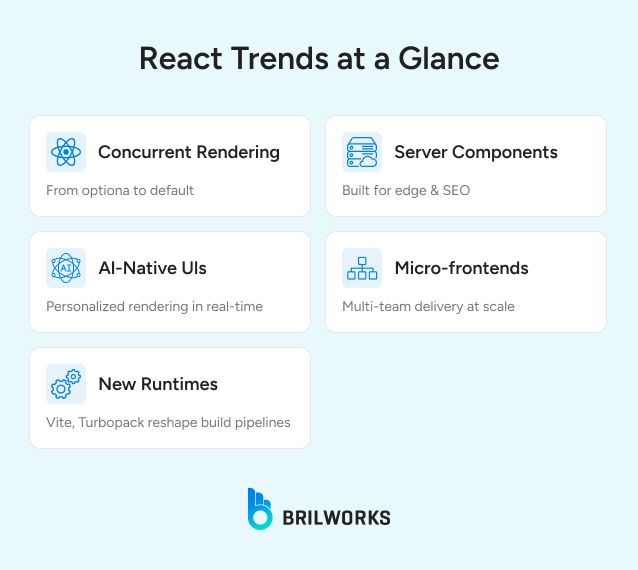
React 19 emphasizes server-first rendering and concurrency.
AI tools like GitHub Copilot are essential workflow enhancers.
Micro-frontends and design systems support multi-team scaling.
Performance-first culture is backed by Lighthouse metrics and edge deployment.
React Native’s new architecture is driving enterprise adoption.
Vite and Turbopack are rewriting the build toolchain.
Concurrency is no longer optional.
Wasm adoption is enabling native-class browser performance.
AI-native apps are shifting expectations of interactivity.
If there’s a single thread running through React’s 2025 story, it’s this: the frontend is no longer just the “final layer.” It’s where speed, intelligence, and system-wide efficiency converge. Whether through AI-native apps, new runtimes, or server-first strategies, React is adapting to a broader shift in how software is built.
Its future doesn’t hinge on one tool or framework. It depends on how teams choose to design for performance, adaptability, and influence in an ever-changing ecosystem.
React 19 introduces Server Components, streaming SSR, better hydration, suspense improvements, a compiler pipeline, and default concurrency.
Yes. With over 82 million websites using React and top ranking in the 2024 Stack Overflow survey, React remains one of the most widely used frontend frameworks.
Vue is narrowing the enterprise gap, while Svelte and SolidJS attract developers with simpler syntax and performance benchmarks. React maintains its edge through ecosystem maturity and framework integration.
Next.js has become React’s flagship framework, with defaults like Turbopack, RSC, and streaming SSR. It reflects where the React ecosystem is headed.
Yes. The React Native new architecture improves performance, native interoperability, and cross-platform reach, making it attractive for cost-conscious startups in fintech, healthcare, and beyond.
Get In Touch
Contact us for your software development requirements
Get In Touch
Contact us for your software development requirements